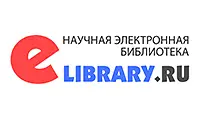Abstract:
Tokenomics is one example of a buzzword that is a combination of the terms token and economics. This neologism is not only a linguistic innovation, but also fully reflects the essence of current trends related to the use of new technologies in business transactions. The digitization of economic transactions is possible thanks to blockchain technology. It is no longer disputed that it is a key technology for guaranteeing the immutability of historical data, which translates into the possibility of safe storage and exchange of goods. Market activities using blockchain are possible on the basis of smart contracts. It should be noted, however, that such a key blockchain (most popular thanks to the BitCoin cryptocurrency) is not the only distributed ledger technology (DLT). This only proves the fact thatvarious technologies are currently being developed, developed and promoted in the financial sector, which only creates the need to create a regulatory framework for an economy that is ready to use innovative technologies without compromising the interests of market participants. Regulation (EU) 2023/1114 of the European Parliament and of the Council of 31 May 2023 on markets in crypto-assets and amending Regulations (EU) No 1093/2010 and (EU) No 1095/2010 and Directives 2013/36/EU and (EU) 2019/1937 (hereinafter referred to as REU) is an attempt to create a rudimentary formal basis for trading in digital manifestations of values or rights within the EU. The second recital in the preamble to the REU indicates that one of the main applications of distributed ledger technology is precisely crypto-assets, the value of which is subjective as it is based solely on the interest of its purchasers. The advantages of crypto-assets are expressed in: 1) optimising the raising of capital for business ventures undertaken by entrepreneurs (primarily start-ups); 2) they can be used as a cheaper and more efficient means of payment minimizing the costs of transactions, including cross-border ones. The transferability of crypto-assets has led to the recognition of some of them as financial instruments subject to regulation under financial services rules. However, a large group of crypto-assets, including the tokens analysed in this paper, fall into the unregulated category. The multitude of problems associated with this type of crypto-asset mainly focuses on the rules of operation of trading platforms, their exchange for cash or other assets, the services of storing and administering crypto-assets, as well as the liability of entities undertaking these activities towards their clients. Hence, this publication is related to answering one research question concerning a specific crypto-asset and its use in a specific market segment (real estate trading) with a strictly defined regulatory framework (Polish law). The question is, is it possible to create a token relating to real estate? A positive answer implies two specific research problems: 1) what right (entitlement) will be incorporated in this cryptoasset? 2) On what terms will the exchange of this crypto-asset take place as part of real estate trading? During the analyses, the dogamtic-legal method will be used, which consists in the interpretation of the applicable legal regulation along with the extension of its results to include views expressed in the literature and case law.






